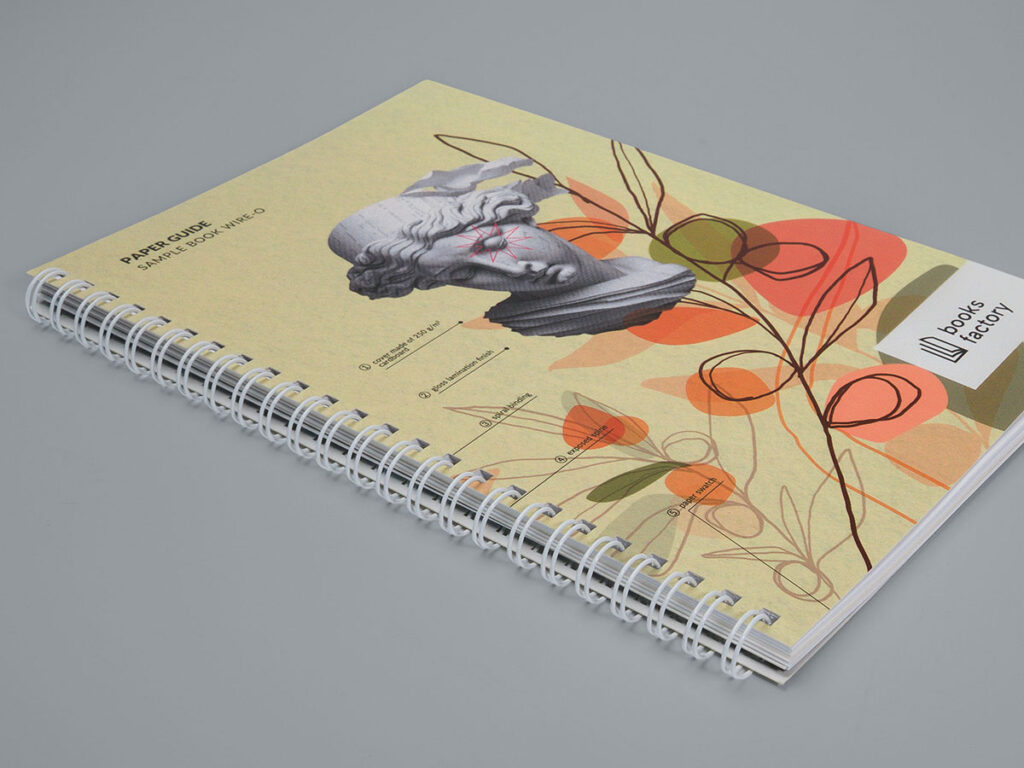
When working on a book project for print, choosing the right paper is a key element. Contrary to appearances, it’s not an easy decision! Uncoated, Munken, and Ecco-Books (bulk-volume papers) are the most popular today. Regardless of trends, it’s good to know which paper will bring out the full potential of your publication and emphasise its style. We’ve prepared a brief guide to help you choose the right type for printing.
Paper classification – by grade
There are many types of paper used in printing, each with different properties and applications. Before we move on to the most commonly used types, here’s a quick overview of the grades used to classify them.
What are the types of paper by grade?
- Grade I and II – wood-free paper with high durability, used for official documents and high-quality publications.
- Grade III – wood-free paper made from pure cellulose, used for school notebooks and some books.
- Grade IV – semi-wood paper, used for unique prints and sometimes books.
- Grades V and VI are semi-wood paper with very high durability; most books are printed in these grades.
- Grades VII, VIII, IX, and X are fully wood-based papers with lower durability. They are used for leaflets, newspapers, brochures, and budget books.
The most popular types of paper for printing
Not all paper is created equal. When it comes to the types available, the topic is vast. Papers can be coated or uncoated, sheet or roll-based, wood-based or wood-free. But those aren’t the only distinctions! Most printing houses use uncoated paper (80 gsm), Ecco-Book volume papers (70 gsm), and Munken book papers (90 gsm).
From the text below, you will learn what main types of printing papers you will find in our offer.
Uncoated Paper
The uncoated paper absorbs ink well, ensuring durability and clear lettering. At Books Factory, you can choose grammage from 70 to 150 gsm, making it suitable for virtually any publication.
The uncoated paper offers excellent colour and detail reproduction, so it’s widely used in digital printing. It’s perfect for novels, children’s colouring books, magazines, corporate documents, Wire-O or brochures.
Ecco-Book Volume Paper
Ecco-book is a lightweight, uncoated paper ideal for printing text-heavy books, especially novels. Available in Cream and White (70 gsm) and Lux (90 gsm), it combines low weight with appropriate thickness, enabling double-sided printing with no show-through. The cream version reduces eye strain, while the white ensures high contrast. Its matte surface guarantees readability and subtle colour rendering, making it great for monochrome printing.
Munken Print
This premium, uncoated paper meets the high expectations of today’s readers. It has a silky smooth surface and a natural look. It comes in cream or white and is available in 90 and 150 gsm. It’s aesthetically pleasing, durable, and environmentally friendly. We recommend it for novels or comics in various formats.
Double-sided coated paper
Commonly called “coated” or “glossy” paper, this type is available in matt or gloss finishes in grammages from 115 to 250 gsm. We recommend it, especially for publications with illustrations and photos. It’s perfect for projects with lots of detail. This paper type enables flawless reproduction of even the smallest elements without fading, pixelation, or blurring. It is ideal for photo-rich titles, graphic novels, or promotional materials.
Cardboard
You might be surprised to learn that cardboard is also a type of printing paper. It’s rigid, with a high grammage of 350 to even 600 gsm, ensuring exceptional book durability. Printing typically uses a one-sided coated board. This type is ideal for covers, reports, boxes, or children’s board books.
Of course, other paper types, such as decorative, self-adhesive, or carbonless, are rarely used in book production.
How do you choose the correct paper parameters?
Paper characteristics influence print quality and cost. Key factors include:
- Paper grammage – determines weight and stiffness. Inner book pages usually range from 70–150 gsm, while covers use 250–300 gsm.
- Paper format – rolls are generally used for book blocks and sheets for covers.
- Thickness and transparency – thickness affects opacity. The thinner the paper, the more it shows through. This is undesirable in printing, as it hinders reading.
- Colour, brightness, and whiteness – for books, the best background for text and illustrations is white, cream, beige, yellow, or grey. Softer tones reflect less light and reduce eye strain. Bright white, on the other hand, enhances contrast and colour vibrancy. Balance is key.
The best paper for book printing – quick summary:
- Novels: Ecco-Book 70 gsm or Munken 90 gsm (Cream or White).
- Publications with illustrations: Coated paper 115–200 gsm.
- Children’s books: Coated cardboard 350 gsm.
- Corporate documents, brochures: Uncoated paper 80–120 gsm.
Even with all the information above, the choice may not feel obvious! Fortunately, you don’t need to memorise all the paper types and their properties. Our sales team is here to help you choose the best option for your project.
Contact us, and we’ll send you a free sample book with a paper guide.
